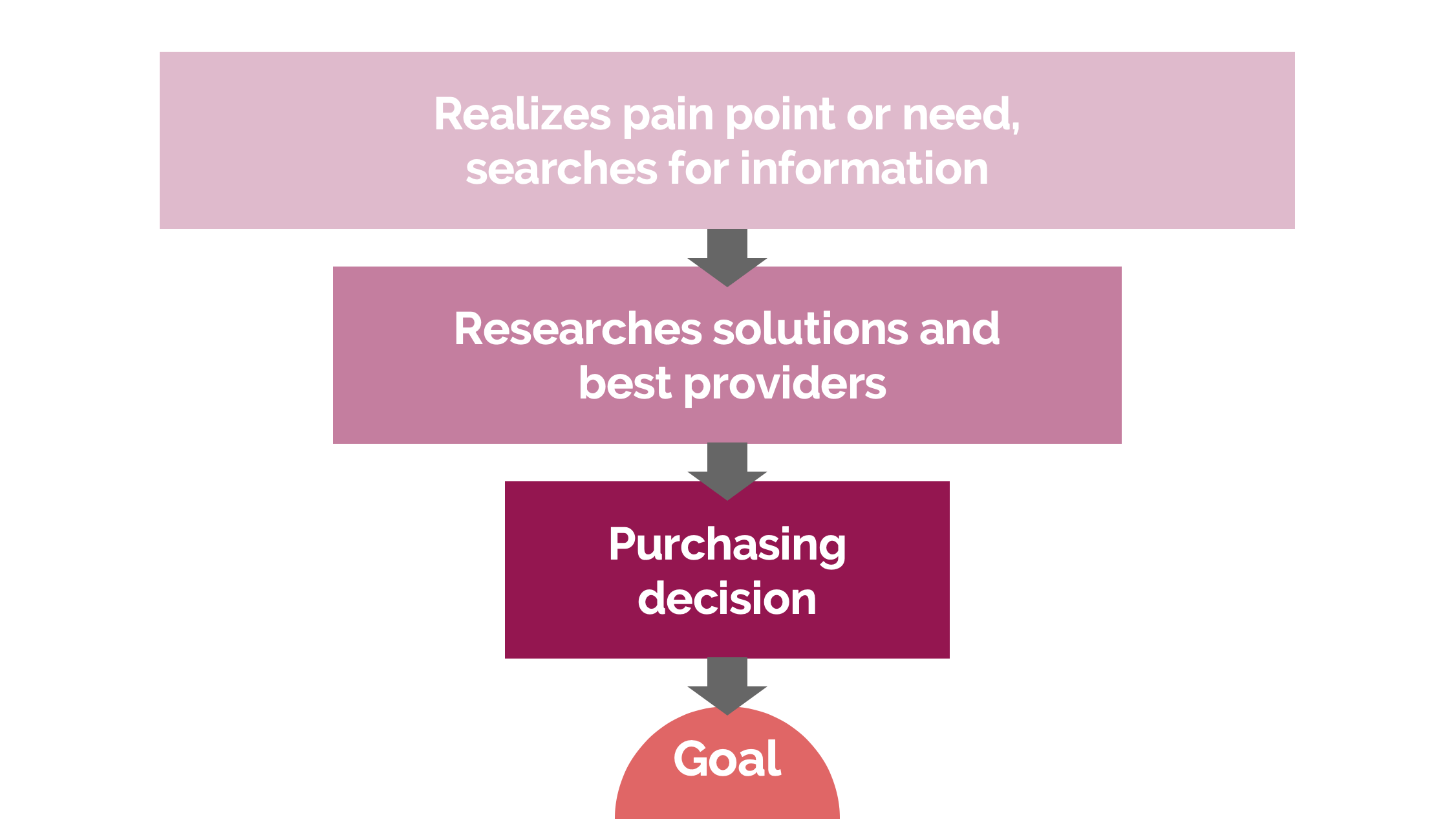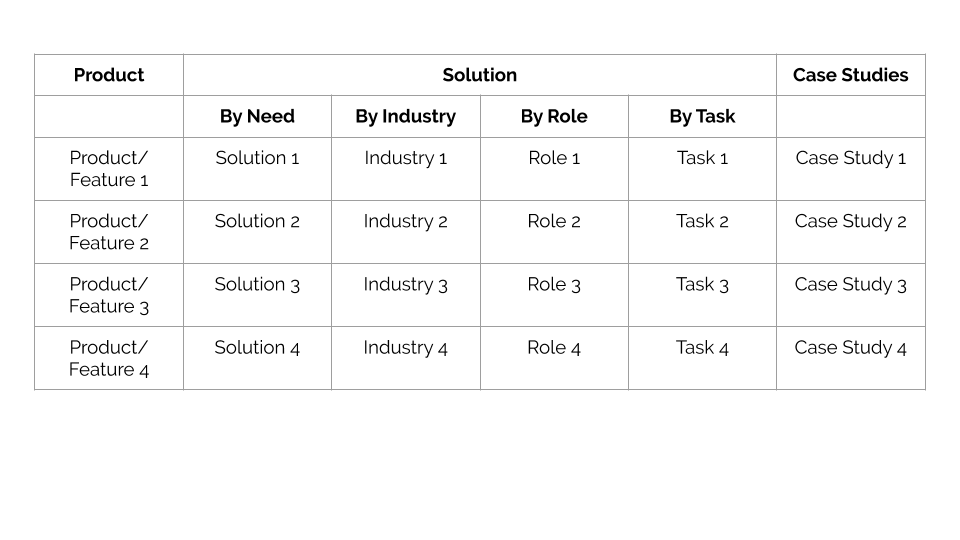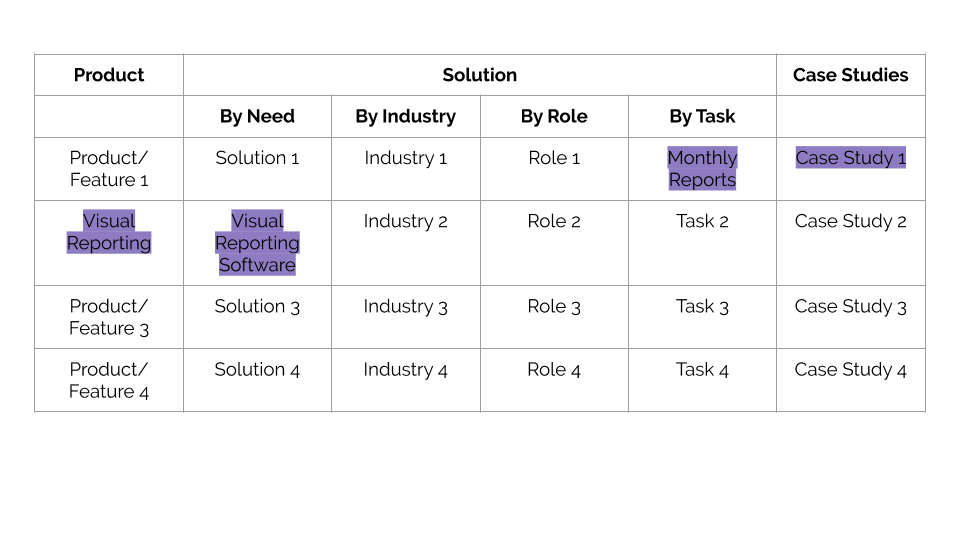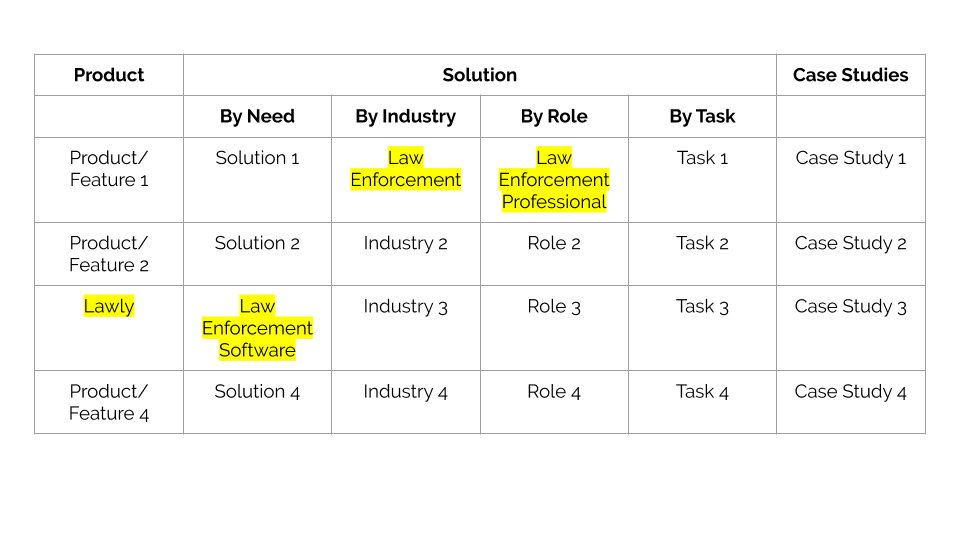Clarity in mind means clarity in content means clarity in hierarchy and structure – and structure is what Google loves.
The structure is important for every good SEO strategy but especially for software businesses where we balance different products, product features, use cases, and solutions as well as new releases, tutorials and knowledgebase articles within the same website.
In this article, you will learn how you can create content for the different customer avatars in an integrated system that works for SEO.
We will talk about the core of your website as well as the technique of ‘siloing’ your website to create topical relevance and thus compete with high authority websites in your niche.
Giving Software Prospects & Users What They Want: The Core of Your Website
When people search for your brand, come to your website by referral, or compare software products, they will typically start on your homepage.
The homepage and your main navigation (header) are the centerpieces of your website. They highlight the product you are offering, the features and use cases – as well as the different parts of the website that users can navigate to.
The typical software business homepage and navigation will include:
The purpose of these pages is mainly lead generation and conversion. They are meant for users at the middle and bottom of the funnel.
This is where you will want your copywriters to create sophisticated and in-depth pages that highlight the value you are providing.

Creating a Main Navigation That Supports Your SEO Efforts
If your product has customers avatars in different industries or positions, you will want to use the product or solution pages to tailor your sales copy to their needs.
A mega menu can help to direct different prospects to “their” sales page.
The menu includes different presentations of your products:
- By brand name or by features.
- By main purpose or functionality (keywords).
- By industry.
- By role.
- By task.
Not every website needs to display all these categories but these are a great framework to segment your users and filter prospects in the right funnel.
Here is an example of such a mega menu that creates clarity and structure.

Now you might know that these categories overlap and that they have relationships between each other that could cause content duplication (which Google does not like).
This means that different parts of the menu will link to the same page where it makes sense.
Here are some examples:


This is the software business hack for SEO. Serving different needs without causing duplicate content or keyword cannibalization.
Content Creation for a Software Businesses: The ‘Blog’
Now that we understand the core or front-end of your website, let’s look at your website from a content marketing and SEO perspective.
Users can find you through Google by entering the brand name or the product keywords (e.g., law enforcement software, bookkeeping tool, data visualization templates, website building tools). These are mapped against your homepage our your product pages as discussed above.
Homepage – Brand name
Product page 1 (or feature 1) – Product keywords
Product page 2 (or feature 2) – Product keywords
…
But users can also find your website by searching for a variety of topics and issues:
- Tutorials for your software
- ‘How to do X in Y software’
- ‘X not showing in Y software’
- Resources and whitepapers
- Reviews and comparisons of your software and other tools
- “Software X vs. Software Y”
- “Software X review”
- Content marketing and SEO content about different topics, this will mainly be related to the industries, roles, and tasks outlined above – and the needs that the different customer avatars have.
The process of structuring those ideas, especially those for content marketing, is called siloing.
Silos are the parent topics that cluster all your content writing.
A silo allows creating subsections of the website that are optimized for certain keyword themes.
Parent topic 1 – Silo 1 with all the blog posts
Parent topic 2 – Silo 2 with all the blog posts
…
The concept of silos is similar to how objects relate in programming.
Top-level silos or categories inherit certain qualities to their child pages. This mindset of objection orientation is exactly what you want to apply to your silo structure for SEO as well.
Every apple is a fruit. But not every fruit is an apple. And living in the silo of ‘fruits’, make the ‘apple’, ‘banana’ and ‘oranges’ pages share certain qualities.
The purpose of the silos is to create structure and relevance.
Relevance is the invisible ranking factor that makes your page appear in the top positions of Google.
And structure approach for content marketing allows creating this relevance by clustering related topics.
You now know exactly where to place new content ideas on the website and the process of keyword research will allow uncovering content gaps on your website structure.
But instead of getting side-tracked on another topic (finding keywords), let’s summarize how a software business can structure their website for SEO and conversion.
When All Parts Play Together
This graphic shows an idealized website structure that improves clarity, relevance and ranking chances.
We can see that the core of the website, silo pages, and articles follow a clear structure and hierarchy based on the relationship that these objects have within each other.
On the level of silos, we can find the following categories:
- Tutorials
- Resources and White Papers
- Review and Comparison
- Content Silo 1
- Content Silo 2…
This can vertically expand as much as needed and your content team keeps up with.
The third level, the level of posts and pages, is shown for tutorial and silo. But every silo will have their own child pages. Ideally, 10-30 of them at the bare minimum to gain SEO traction.
It is important to understand that the most search traffic will arrive from the “bottom” of the pyramid, from certain pages or posts that are optimized for relevant keywords.

Now, it is your turn.
Is the website of your software business optimized for SEO?
More Resources:
Image Credits
Featured Image: Pexels
In-Post Images #1-5: Created by author, October 2019
